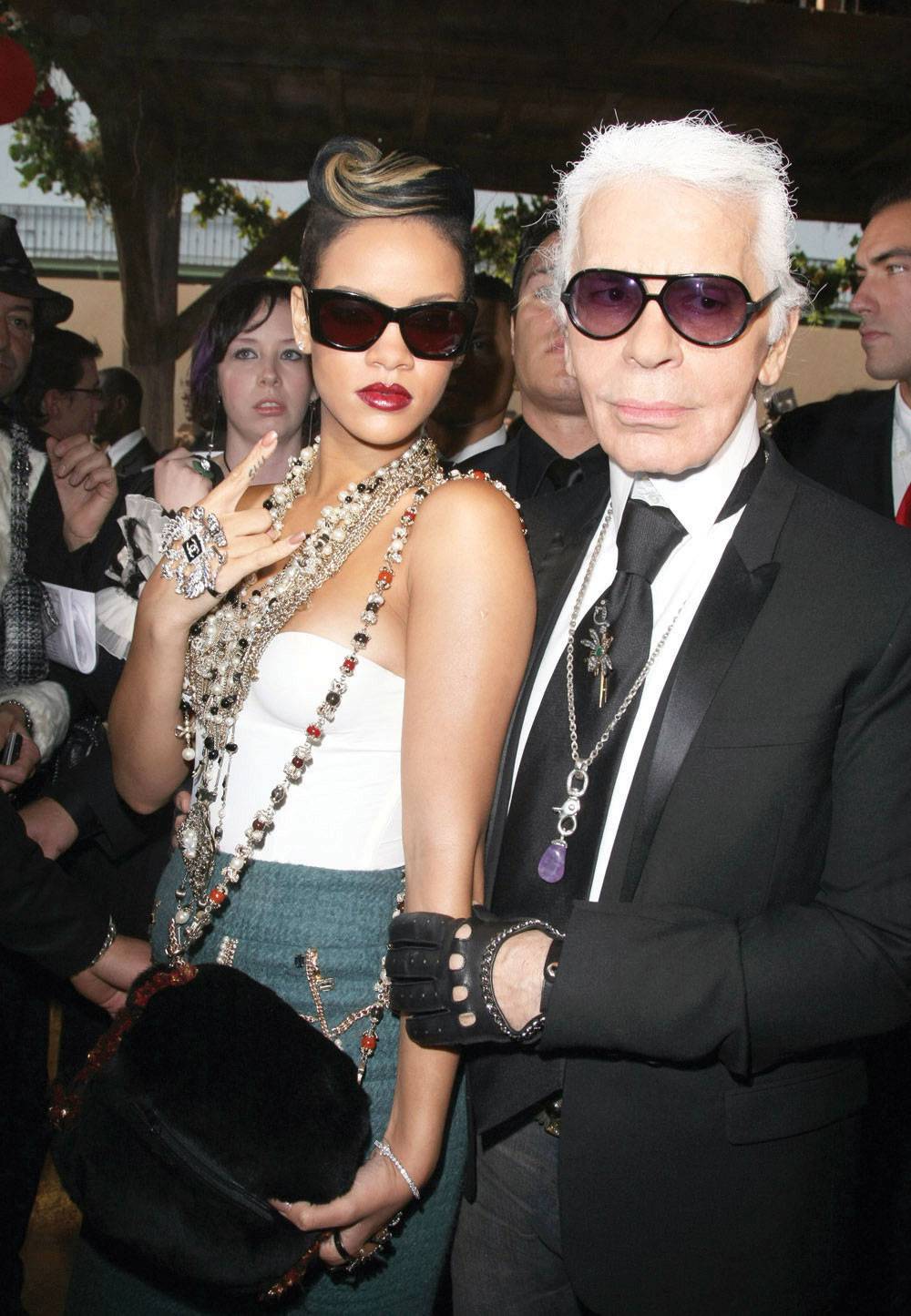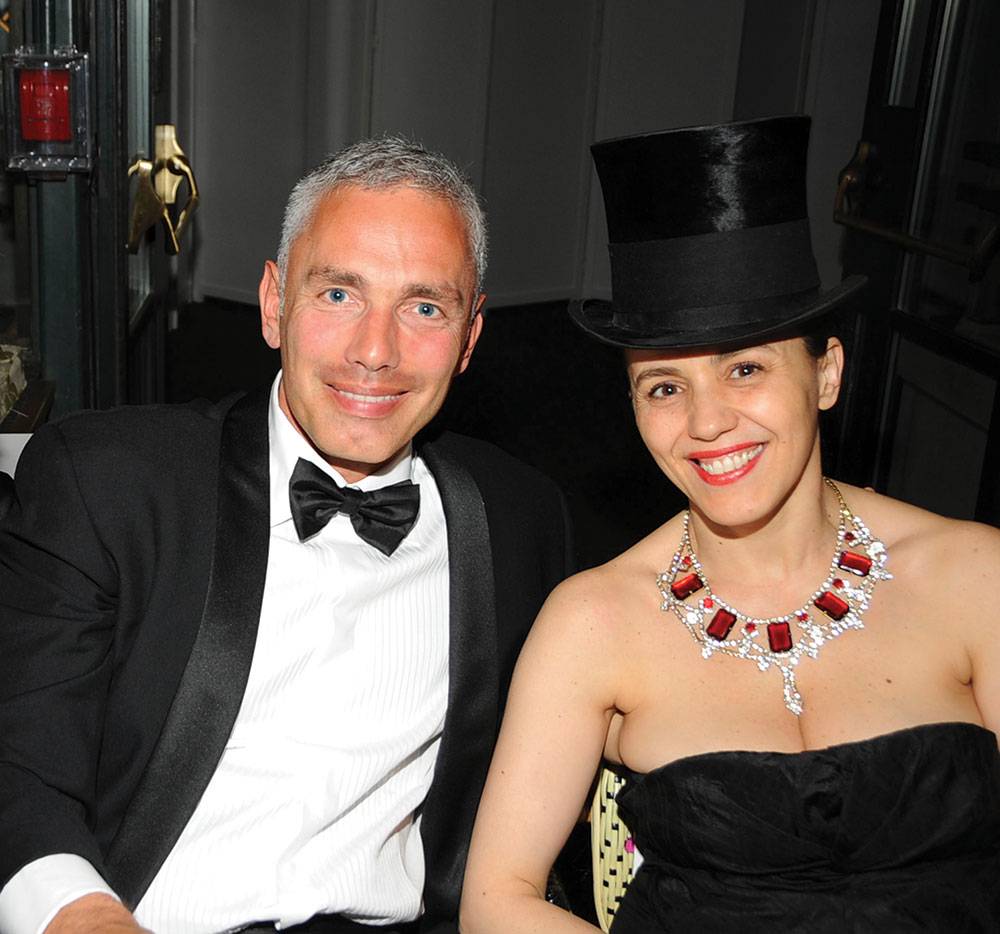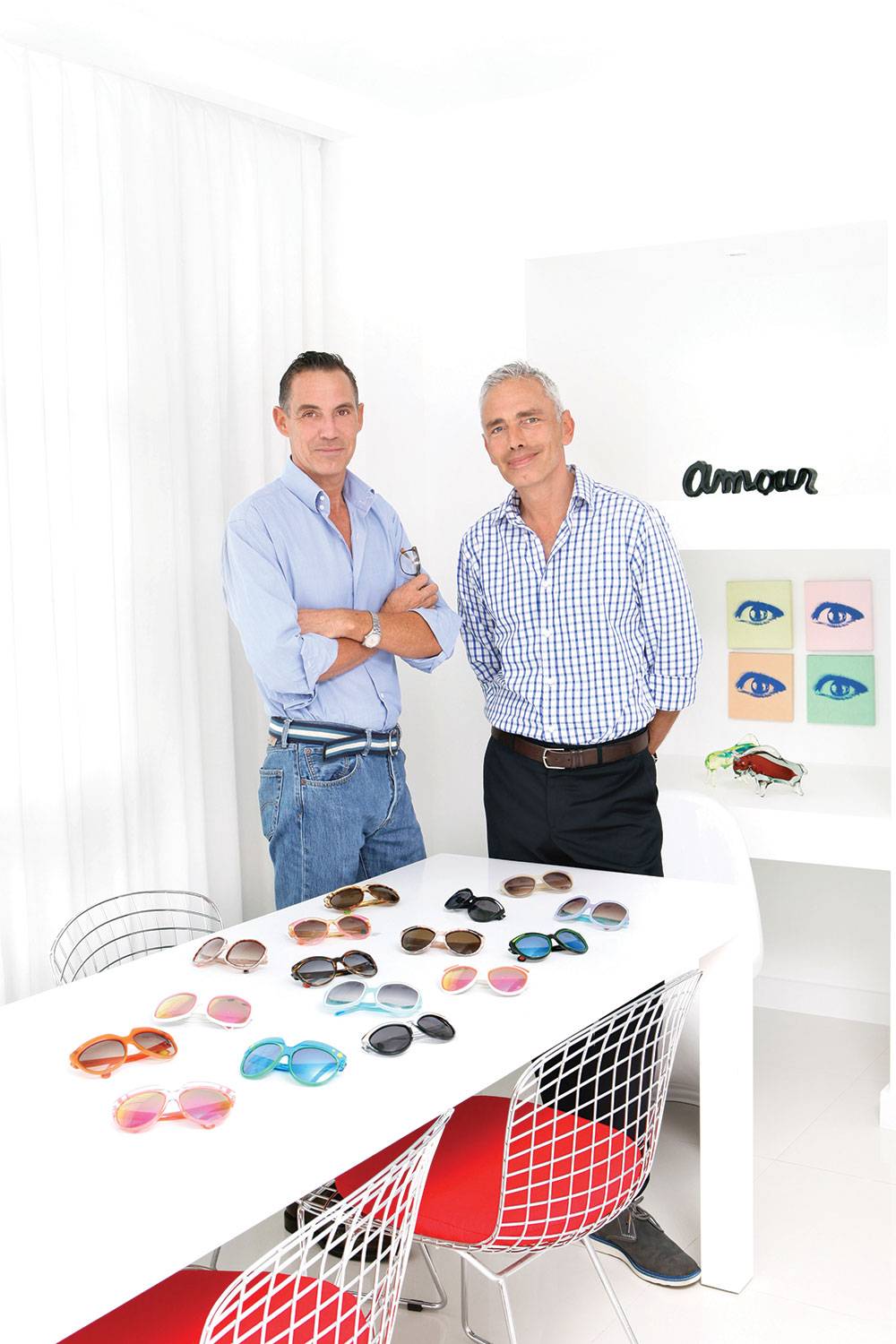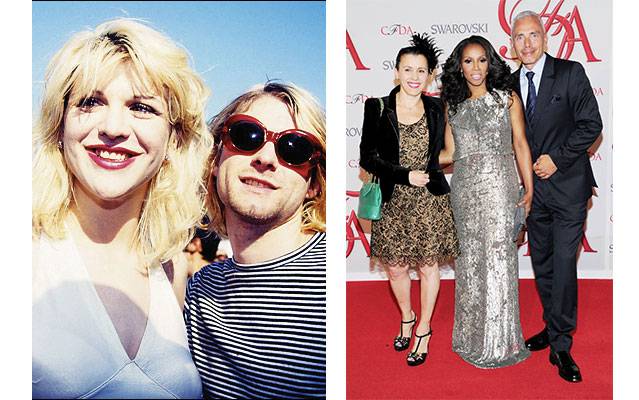What do Karl Lagerfeld, Kate Moss, Lenny Kravitz and Daphne Guinness have in common? They all wear and love Christian Roth eyewear. They are attracted to the bold styling define the type of independent, fashion-forward people who wear the brand.
Christian Roth frames have had many iconic moments in fashion history, but you might never know it. “We don’t put our brand name on the outside of our glasses,” explains Christian Roth from the sunny Belle Isle residence in Miami Beach he shares with founding partner Eric Domege. The designers know that their avant-garde clientele doesn’t need labels; they’ve got a style that speaks for itself.
Christian Roth, the brand came about more than thirty years ago when Domege and Roth met in the early 1980’s in New York City. Christian was living in the city and was the assistant of a big fashion photographer. He had recently moved from Germany, where he had worked in an upscale eyeglass store in West Berlin. There he had the occasion to sell a pair of glasses to the newly anointed American First Lady, Nancy Reagan. “It was hard because there wasn’t much of a choice back then,” says Roth. “It impressed me that people were willing to spend a lot of money but there was really nothing interesting to give them.”
Domege, on the other hand, had come from France, and had a passion for eyewear that stemmed from a combination of his needing glasses and devoted interest in fashion.
One singular instance in 1983 propelled the duo into the limelight. Peter Kea was doing a fashion show at popular nightclub Area and needed eyewear. He turned to Eric and Christian, known eyewear aficionados, to make glasses for his runway show. They took flea market finds and spray painted them, popped out lenses and replaced them with brightly colored ones. The show was a hit and made the cover of Woman’s Wear Daily. “They had never seen such a design. We had optical stores in California and Macy’s calling and we didn’t even have production yet,” recalls Domege.
They got production in Italy, where the factories gave them 90 days credit, allowing them time to sell the items to stores. The stores paid on time and the brand was built. “It’s harder to start a business today,” laments Roth.

These days the pair keeps a low profile, but remains close with the fellow designers, actors and artists they befriended in their early days.
The young designers drew the attention of one famous group in particular: Andy Warhol and his Factory. “Everyone at The Factory was really supportive of our work, especially Andy and his assistant Christoper Makos,” explains Domege. “I think they were intrigued to meet us because we were the first to just be making creative eyeglasses. And they knew the fashion designers, photographers, artists… everyone. They helped
us a lot.”
Roth adds, “Andy had a special interest too, because he had to wear glasses; it was something he couldn’t leave home without.” It also might have had to do with their ground-breaking designs and unabashed use of color. “We were crazy for color. I remember at one point, one retailer said ‘Stop, we need black and brown,’ but we’ve always been supportive of color. Besides, you don’t need to wear the same frames every day, you can mix it up.”
By 1989, Christian landed an invitation to become the first eyewear brand to join the Council of Fashion Designers of America (CFDA.) This pushed them into the big leagues and before they knew it they were designing eyewear collections for Michael Kors and Marc Jacobs.
Business was booming and Christian Roth glasses were popping up everywhere, on wearers like Kurt Cobain and Carla Bruni. Roth recalls one particular request he received in the early 90’s when he was the first in to his Union Square office one morning. “It was early and I answered the phone and a smoky voice said ‘I want your Jackie O frames – the ones my sister used to wear.’ It turns out that it was Lee Radziwill, Jackie Onassis’ sister. She was a bit bossy about it and came over to the studio the same day to get fitted for the frames.” Radziwill was very happy to have a high-end designer doing a version of those famous, oversize frames. The original version had been made custom for Jackie by an optician back in the 70’s because she had an enormous pupil distance and wanted her eyes to be perfectly centered in them. Apparently, Ms. Radziwill also benefitted from the width and was happy to find Roth’s version recreated with such fine materials at the time.

In 1996, when Christian Roth was at the top of its game, Roth and Domege sold the company to an investment group, which was one of the first to believe in the growth potential of designer label eyewear. “Things didn’t work out the way we wanted, so we resigned,” explains Roth. They had signed a non-compete and had to wait two years during which they decided to leave New York and move to Monaco. “It was a two year sabbatical, and probably one of the nicest periods of our lives,” reflects Roth. But the vacation ended two years later when the company that had bought them out went bankrupt and the two were able to purchase their trademark back at a silent auction in 1998.
And so, a new Christian Roth era began and they commenced a fifteen-year partnership with Charmant, a huge Japanese eyewear distribution firm who insured the brand went global. “They were beautiful quality,” recalls Christian who notes that although they no longer work with Charmant, they still make all of their titanium frames in Japan, where labor is notoriously expensive but some of the best in the world. “We renewed the contract four times, but then they started overselling.” The firm was putting too much merchandise on the market, which they felt hurt the brand and flew in the face of exclusivity.
So Roth and Domege stepped back, reigned in and refocused on selling a limited collection online and in just a few stores in America and Europe. Whereas they used to be available at five boutiques on Lincoln under Charmant, they are now only available at the eyewear aficianado’s store, Artsee. They can also be found at Berdorf Goodman’s in New York. “You don’t want to see everyone else wearing the same glasses, so we must maintain this exclusivity,” says Roth. This quantity also suits the artisans at the factory in Italy. “This is our favorite place to work, they have access to the most interesting plastic materials and the process is very collaborative with them,” adds Domege.
After withdrawing the line from many stores, customers are happy to have found them online. “We have two generations of customers out there now. That’s a good base for business,” says Domege. They have also broken the traditional trade show cycle and now, instead of twice a year, typically introduce two new frames per month.
These days the pair keeps a low profile, but remains close with the fellow designers, actors and artists they befriended in their early days. They divide their time between Monaco and Miami Beach, where they have a residence and studio in the same building. Both are light, and bright and festooned with perfectly placed colorful pop art that complements the vast white space. Works by Kenny Scharf, David Hockney, Roy Lichtenstein, Christopher Makos, Robert Mapplethorpe and Bruce Weber adorn the walls. “We have a very nice apartment and really work well there because there are few distractions. We love it here, but there are a lot more distractions for us in Miami,” says Roth with a laugh.



















